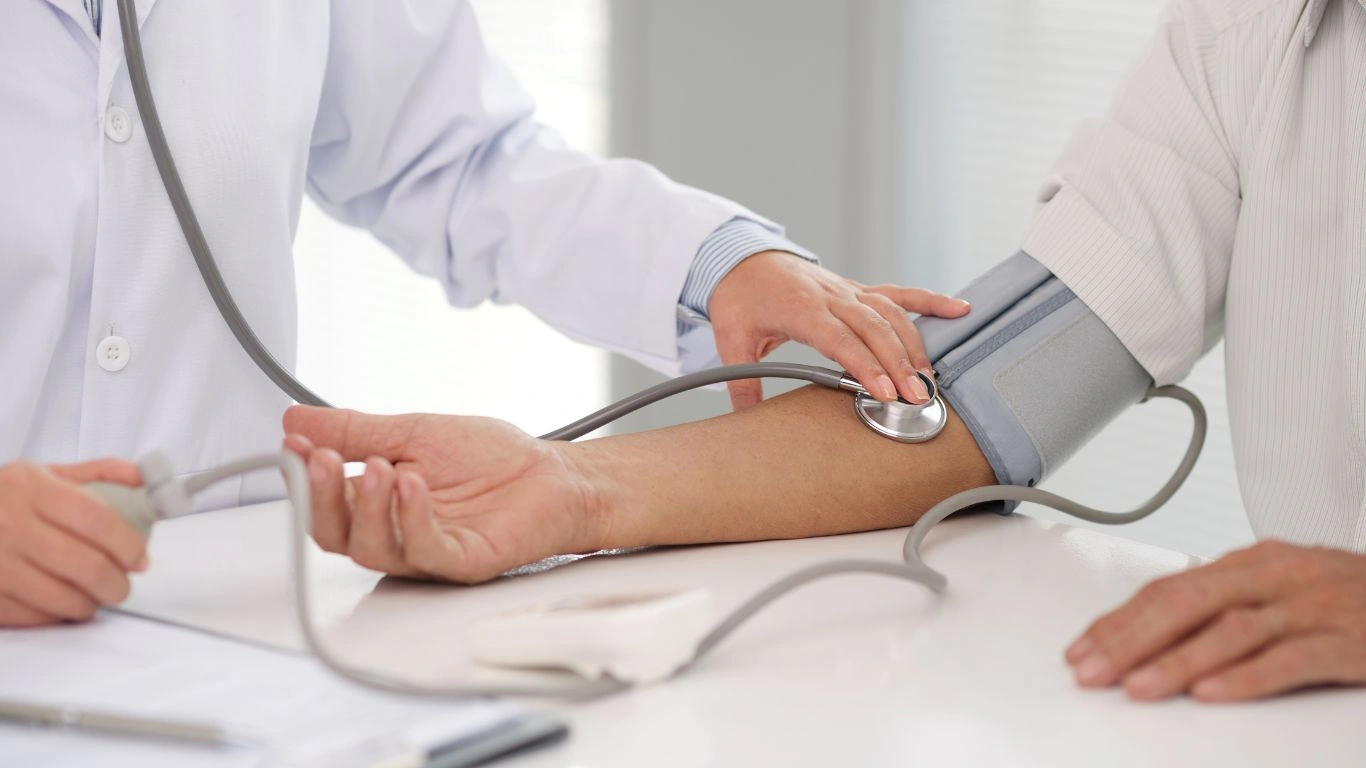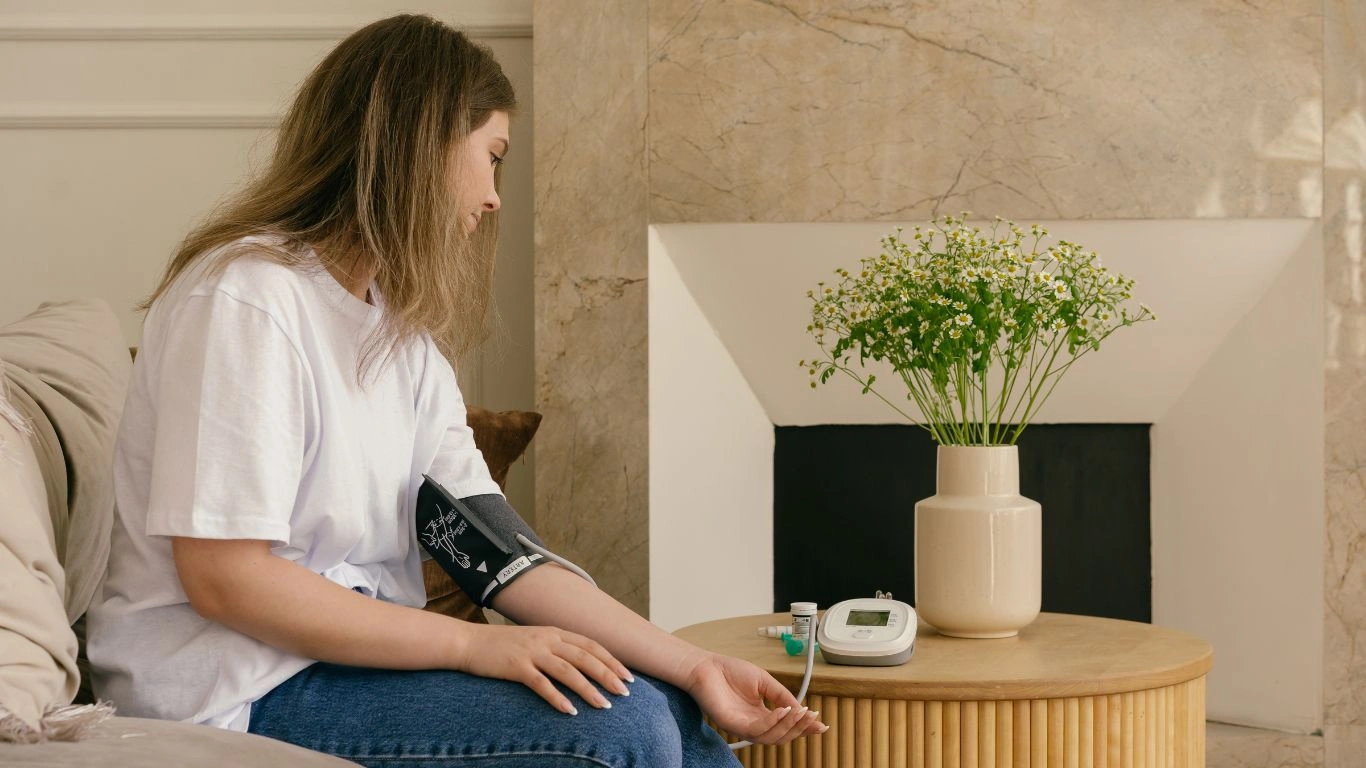7 Simple Morning Rituals to Reduce Hypertension and Boost Heart Health
As an Internal Medicine Physician specializing in hypertension management, I’ve seen firsthand how small changes can make a big impact on blood pressure. One area that often gets overlooked? The importance of morning rituals to reduce hypertension. It might sound simple, but your morning routine plays a significant role in how your body handles stress and maintains blood pressure throughout the day. Hypertension, or high blood pressure, is a condition that affects millions, and managing it doesn’t have to involve expensive medications or complicated procedures. Sometimes, the best solutions are the simplest ones. In this article, we’re going to talk about some easy-to-follow morning rituals that can set you up for a healthier day and help you manage your hypertension naturally.
Why Morning Rituals Matter for Hypertension
If you’re someone who starts the day in a rush—rushing out the door with a cup of coffee in hand and barely a moment to breathe—you’re not alone. Many people jump straight into their day, and that’s often a missed opportunity to optimize your health. The first few hours after waking up can have a big influence on how your body responds to the rest of the day, especially in terms of your blood pressure. A calm and mindful morning can reduce the stress hormone cortisol, which is often a major contributor to high blood pressure.
Think of it this way: your body’s stress response is often triggered in the morning, and it can last throughout the day if not managed properly. By setting aside time for intentional self-care in the morning, you’re actively reducing the risk of that heightened stress response, which is key for hypertension management.
Starting Your Morning with Hydration

We’ve all heard that hydration is important, but did you know that it can actually help lower your blood pressure? Dehydration can cause your blood vessels to constrict, which raises blood pressure. By starting your morning with a glass of water, you’re giving your body the hydration it needs to function optimally.
One thing I often recommend to my patients is to drink a glass of water first thing in the morning, preferably before you even have that cup of coffee. It’s a small but effective change that can make a huge difference in the long run. You can also add a slice of lemon or some cucumber to your water for an extra health boost, as they’re known to support blood pressure health and improve digestion.
Gentle Movement to Get the Blood Flowing

When you wake up, your body has been at rest for hours. You might feel stiff or sluggish, and while it can be tempting to skip any sort of movement in favor of a few more minutes of sleep, gentle stretching or light exercise can do wonders for reducing hypertension.
Physical activity helps your heart become more efficient, lowering the force at which blood is pumped. A simple morning stretch routine, or a brief walk, is one of the most effective ways to gently wake up your body and get the blood flowing without pushing it too hard. Even a short 5-10 minute walk around your home or stretching routine can significantly improve circulation and lower blood pressure.
Breathing Exercises to Relax the Mind and Body

One of the most powerful ways to reduce stress and lower blood pressure is through mindful breathing exercises. Stress is a major contributor to high blood pressure, and when we’re stressed, we tend to take shallow breaths, which can exacerbate hypertension.
Taking just a few minutes each morning to practice deep breathing can have a profound effect on your blood pressure. One technique that I recommend is diaphragmatic breathing, or “belly breathing.” It’s simple: sit or lie down, place one hand on your stomach, and take a slow, deep breath in through your nose, allowing your stomach to rise. Then, exhale slowly through your mouth. This kind of deep breathing activates the parasympathetic nervous system, which helps to reduce the body’s stress response and lowers blood pressure.
If you’re new to breathing exercises, don’t worry. It’s not about perfection. Just aim for 5-10 minutes of focused breathing each morning, and you’ll start to notice a difference in your overall stress levels and blood pressure over time.
Mindful Eating Habits to Set the Tone
Another essential part of your morning ritual is what you put into your body. How you approach your first meal of the day can influence your blood pressure throughout the day. It’s not just about eating; it’s about eating mindfully and choosing foods that support heart health.
Instead of grabbing a sugary breakfast bar or skipping breakfast altogether, take the time to prepare a healthy, balanced meal. Consider incorporating foods that are known to support healthy blood pressure, like whole grains, fruits, vegetables, and healthy fats. Foods high in potassium, such as bananas, avocados, and leafy greens, are excellent choices to help regulate blood pressure. A hearty bowl of oatmeal, a smoothie with spinach and berries, or scrambled eggs with sautéed veggies are great examples of hypertension-friendly breakfasts.
It’s also important to avoid overloading on caffeine in the morning. While a cup of coffee is fine for most people, excessive caffeine intake can raise your blood pressure. If you find that you’re sensitive to caffeine, try switching to green tea or herbal teas that offer health benefits without the jitters.
Creating a Morning Ritual that Works for You
Remember, the key to reducing hypertension with morning rituals is consistency. It’s not about following a perfect routine, but about making small, manageable changes that you can stick with over time. Start with one or two of the tips I’ve shared, and gradually build a routine that works for you. You may find that, over time, these simple morning habits not only help reduce your blood pressure but also improve your mood, energy levels, and overall well-being.
As an internal medicine physician, I’ve seen how small daily rituals can add up to significant improvements in health. And the best part? You don’t need a gym membership, expensive supplements, or a complicated routine to get started. It’s about making intentional choices that set the tone for your day—and ultimately, for your health.
Building on Your Morning Routine: Creating Long-Term Hypertension Benefits
If you’ve made it this far, you’re probably starting to realize how powerful your morning rituals can be when it comes to managing hypertension. The changes I’ve shared so far are a great starting point, but let’s dive deeper into how you can make these practices a consistent part of your daily life and how they can deliver long-term benefits for your blood pressure.
Incorporating Mindfulness into Your Morning

As someone who deals with hypertension on a daily basis, one thing I can tell you is that the connection between your mental health and your blood pressure is undeniable. That’s why incorporating mindfulness practices into your morning routine is so important. Even if you’re not into meditation, mindfulness can be as simple as taking a moment to check in with yourself before the chaos of the day begins.
I’ve seen many of my patients make amazing strides in managing their blood pressure just by giving themselves a few minutes to breathe and refocus. You don’t need to set aside an hour for this. A short 5-10 minute mindfulness session can work wonders. Whether it’s a few minutes of meditation, focusing on your breath, or even practicing gratitude, these small moments of mental clarity can significantly reduce stress, calm your mind, and lower cortisol levels, which in turn helps regulate blood pressure.
Mindfulness is all about being present in the moment. Try this: sit quietly in a comfortable position, close your eyes, and simply focus on your breathing. If your mind starts to wander, gently bring it back to the breath. This practice can help you feel grounded and less reactive to stress, setting a peaceful tone for the rest of the day.
The Power of a Healthy Morning Snack
Now, let’s talk about one more simple change you can make in your morning routine to support your blood pressure: a nutritious snack. Most of us are familiar with the importance of a good breakfast, but what about those little moments between meals? If you find yourself feeling a bit sluggish before lunch, it could be because your blood sugar is dipping too low, which can lead to an increase in stress hormones and a spike in blood pressure.
So, what should you snack on? Well, the key is to keep it balanced with healthy fats, fiber, and protein—something that stabilizes your blood sugar without causing a crash later on. Some great options include a handful of almonds, a small apple with peanut butter, or a piece of whole grain toast with avocado. These snacks help regulate blood sugar and prevent the ups and downs that can lead to increased stress on your cardiovascular system.
Reducing Stimulants in Your Morning Routine

Let’s talk about something we’re all familiar with—coffee. For many, that cup of coffee in the morning is a ritual in itself. But here’s the thing: while caffeine may give you a temporary boost, it can also spike your blood pressure. This doesn’t mean you have to completely ditch your morning coffee (unless you’re advised to by your doctor), but it’s worth considering how much caffeine you’re consuming and how it affects your body.
As someone who manages hypertension daily, I’ve seen cases where patients who were sensitive to caffeine didn’t realize how much their daily coffee habit was impacting their blood pressure. If you’re someone who enjoys coffee but has been noticing higher-than-usual readings, consider cutting back or switching to lower-caffeine options like green tea or herbal tea. These alternatives can still give you a morning ritual to look forward to without adding unnecessary strain on your heart.
Additionally, consider how many cups you’re having per day. Moderation is key when it comes to caffeine—keeping it to one or two cups in the morning is typically fine for most people. If you’re drinking more than that, your body may be reacting with higher blood pressure, even if you don’t feel it right away.
The Role of Sleep in Managing Hypertension
We’ve talked a lot about what you can do in the mornings, but let’s take a quick step back and address something that’s just as important—how well you’re sleeping. I can’t tell you how many patients I’ve worked with who have hypertension, only to discover that poor sleep is playing a big role in their elevated blood pressure. When you’re not getting enough sleep or the quality of your sleep is poor, your body is under constant stress, and your blood pressure can creep up as a result.
Making sure you get a solid 7-8 hours of sleep each night is crucial for managing hypertension. The body repairs and rejuvenates itself during sleep, and your blood pressure naturally lowers when you’re in a deep sleep cycle. But lack of sleep or disrupted sleep can lead to hormonal imbalances, higher stress levels, and, you guessed it—higher blood pressure.
If you’re not already prioritizing sleep, I highly encourage you to consider it as part of your morning routine. Sounds counterintuitive, right? But how you treat your sleep at night will directly impact how you feel in the morning. Creating a relaxing bedtime routine, avoiding screens before bed, and sticking to a consistent sleep schedule are all steps that can improve both your sleep quality and your blood pressure.
Stay Hydrated Throughout the Day

Now that we’ve covered your morning hydration, let’s not forget about staying hydrated throughout the day. This is something I stress to my patients regularly. Consistent hydration is a key player in managing hypertension. As mentioned before, dehydration causes your blood vessels to constrict, which can raise your blood pressure. Keeping a water bottle with you during the day ensures you’re drinking enough, especially if you’re on the go. I always recommend sipping water regularly—don’t wait until you’re thirsty.
But don’t just drink water. You can also incorporate hydration-rich foods like cucumbers, watermelon, or oranges into your meals to further support your hydration levels and heart health. The more consistently you hydrate, the better your body will function, especially when it comes to managing blood pressure.
Incorporating these small but effective morning rituals into your daily life can have a major impact on your hypertension management. And remember, it doesn’t happen overnight. It’s about consistency and making gradual changes that add up over time. With a little effort and mindfulness, you can start lowering your blood pressure naturally and feel better overall.
Taking It Further: Advanced Practices to Lower Hypertension
By now, we’ve covered some solid morning rituals that can help you manage hypertension, but I want to take it a step further. If you’re feeling motivated to continue making positive changes, there are a few advanced practices that can take your hypertension management to the next level. These aren’t quick fixes, but they’re effective ways to support long-term blood pressure control. Incorporating these strategies into your daily life can truly make a difference in the health of your heart and cardiovascular system.
Incorporating Strength Training and Cardio into Your Routine

While light stretching and walking are great for blood pressure management, adding more structured exercise into your routine is another powerful way to lower hypertension. As an internal medicine physician, I’ve seen how regular cardiovascular exercise and strength training can have a significant impact on your blood pressure. Exercise doesn’t just help you lose weight (although it can), it also improves circulation and strengthens your heart muscle, making it more efficient in pumping blood.
If you’re new to exercise or haven’t been active for a while, start slow and listen to your body. Aim for at least 150 minutes of moderate-intensity exercise per week, as recommended by health authorities. That could be spread out across the week in 30-minute sessions. Whether it’s brisk walking, swimming, cycling, or a combination of cardio and strength training, the goal is to get your heart rate up and keep it there for a sustained period.
Strength training, even at a moderate intensity, has been shown to lower both systolic and diastolic blood pressure. You don’t need a fancy gym membership to get started—bodyweight exercises like squats, lunges, and push-ups are just as effective. A couple of times a week can do wonders for your blood pressure and overall health. If you’re unsure where to start, a personal trainer or physical therapist can guide you with an appropriate plan.
Making Dietary Adjustments for Long-Term Heart Health
We’ve already touched on some foods that support heart health, but I want to go a little deeper into the role diet plays in managing hypertension. The relationship between what you eat and your blood pressure is incredibly strong. If you’re serious about lowering hypertension, adopting a heart-healthy diet is essential.
One of the best eating patterns for hypertension is the DASH diet (Dietary Approaches to Stop Hypertension). It emphasizes whole foods like fruits, vegetables, whole grains, lean protein (like fish, beans, and poultry), and low-fat dairy products. This diet is rich in potassium, calcium, and magnesium, all of which play a key role in regulating blood pressure. The DASH diet also limits sodium, which can raise blood pressure when consumed in excess.
Another dietary factor to consider is your intake of unhealthy fats. Reducing your consumption of trans fats and saturated fats—found in processed foods, fried foods, and fatty cuts of meat—can help prevent artery damage and reduce your risk of hypertension. Healthy fats, on the other hand, like those found in avocados, olive oil, and fatty fish, can help lower inflammation and improve heart health.
When you combine a balanced diet with hydration, exercise, and stress management, you create a powerful foundation for managing hypertension in the long term. Eating to support heart health isn’t about quick fixes or drastic changes; it’s about developing sustainable habits that promote overall wellness.
Understanding the Role of Supplements in Hypertension Management
While a well-rounded diet should always be your first line of defense, there are certain supplements that may complement your efforts in managing hypertension. It’s important to talk to your healthcare provider before adding any supplements to your routine, especially if you’re on medication for hypertension. That said, some research suggests that a few key nutrients can help support healthy blood pressure levels.
Magnesium is one such nutrient. It plays a critical role in regulating blood pressure by helping blood vessels relax and improve circulation. Studies have shown that magnesium supplementation can lower both systolic and diastolic blood pressure in individuals with hypertension. Foods like leafy greens, nuts, and seeds are great natural sources of magnesium, but supplements are available if needed.
Potassium is another important mineral. It helps balance the effects of sodium in your body, which can reduce the amount of tension in your blood vessels. Potassium-rich foods, like bananas, sweet potatoes, and spinach, can make a big difference in managing hypertension. Some people may also consider a potassium supplement, but again, consult with your doctor first.
Omega-3 fatty acids, found in fish oil and flaxseed, have been shown to lower blood pressure by reducing inflammation and improving blood vessel function. If you’re not eating fatty fish regularly, omega-3 supplements can be a helpful alternative.
While supplements can provide some support, they should always be part of a comprehensive approach that includes lifestyle changes like those we’ve discussed in previous sections.
References
For more in-depth information on hypertension and how to manage it, check out these reliable resources:
- American Heart Association
- National Heart, Lung, and Blood Institute
- Centers for Disease Control and Prevention (CDC)
Disclaimer
This article is intended for informational purposes only and is not a substitute for professional medical advice. Always consult with your healthcare provider before making significant changes to your diet, exercise, or medication routine. Managing hypertension requires a personalized approach, and your doctor is the best resource for developing a plan that works for you. The information provided here reflects the author’s knowledge and personal experience but should not replace individualized medical guidance.

Dr. Gwenna Aazee is a board-certified Internal Medicine Physician with a special focus on hypertension management, chronic disease prevention, and patient education. With years of experience in both clinical practice and medical writing, she’s passionate about turning evidence-based medicine into accessible, actionable advice. Through her work at Healthusias.com, Dr. Aazee empowers readers to take charge of their health with confidence and clarity. Off the clock, she enjoys deep dives into nutrition research, long walks with her rescue pup, and simplifying medical jargon one article at a time.





